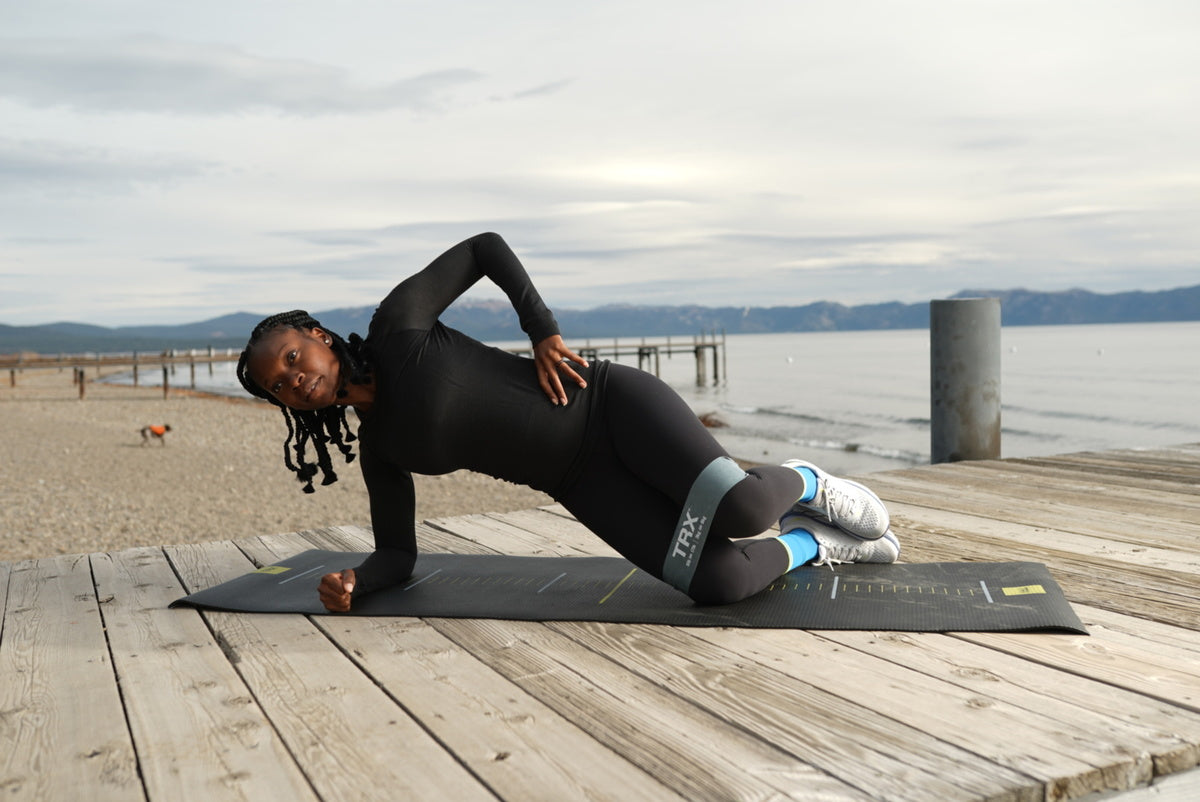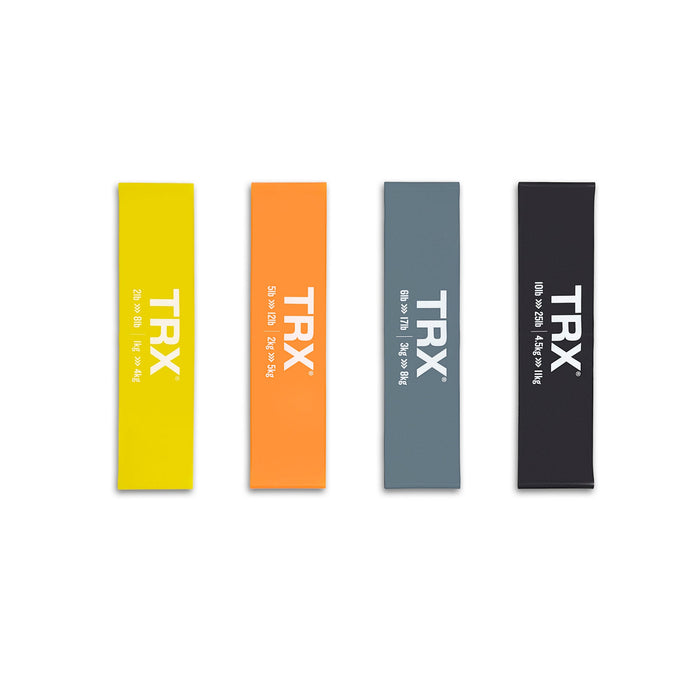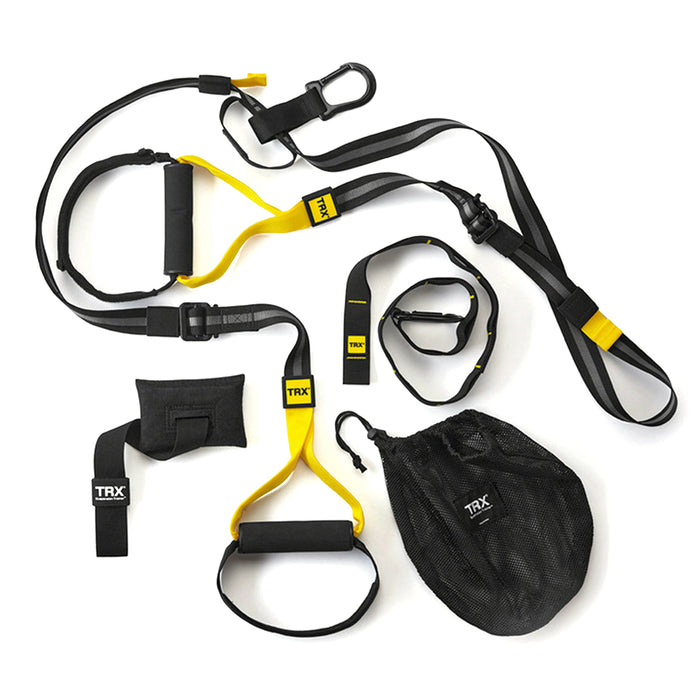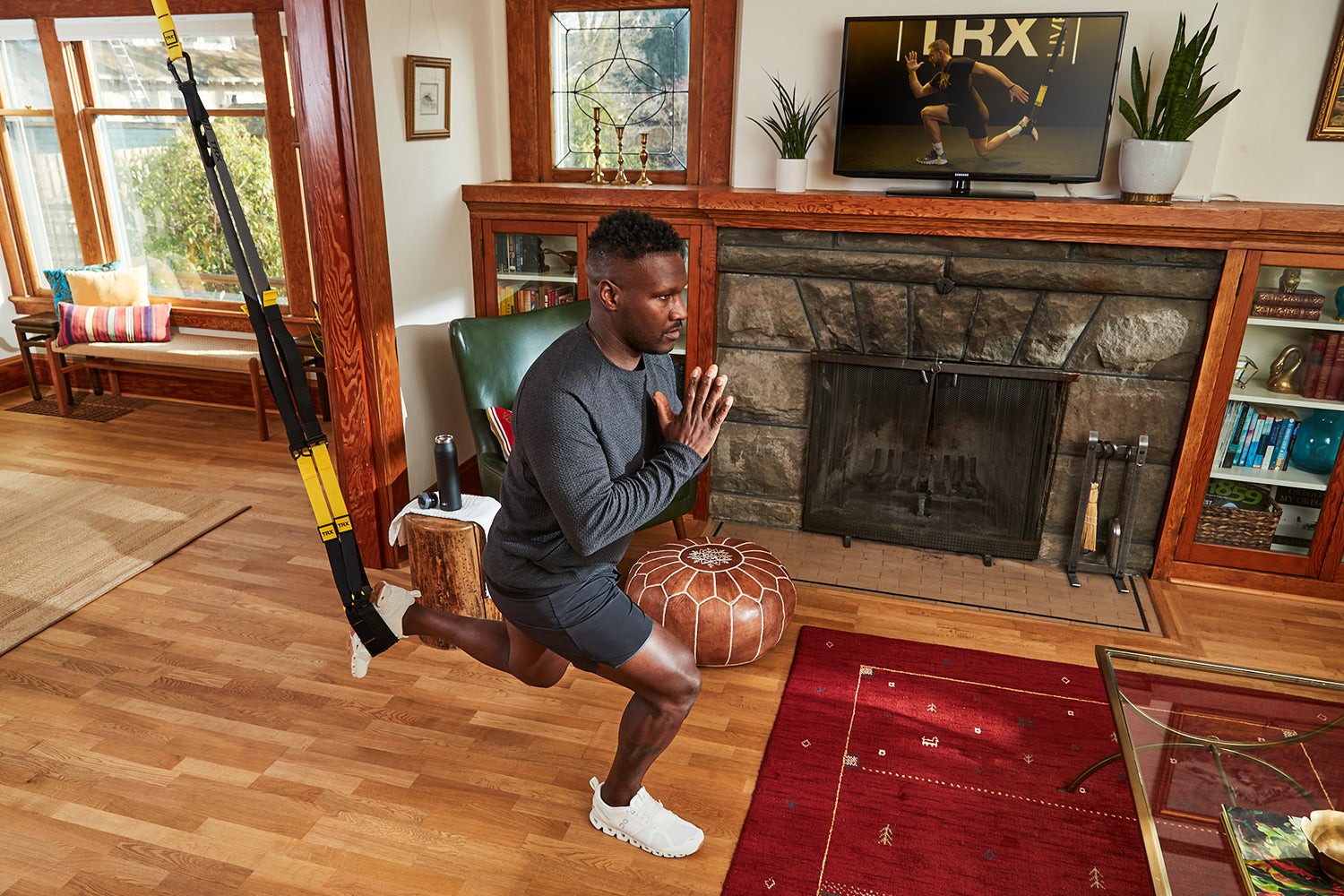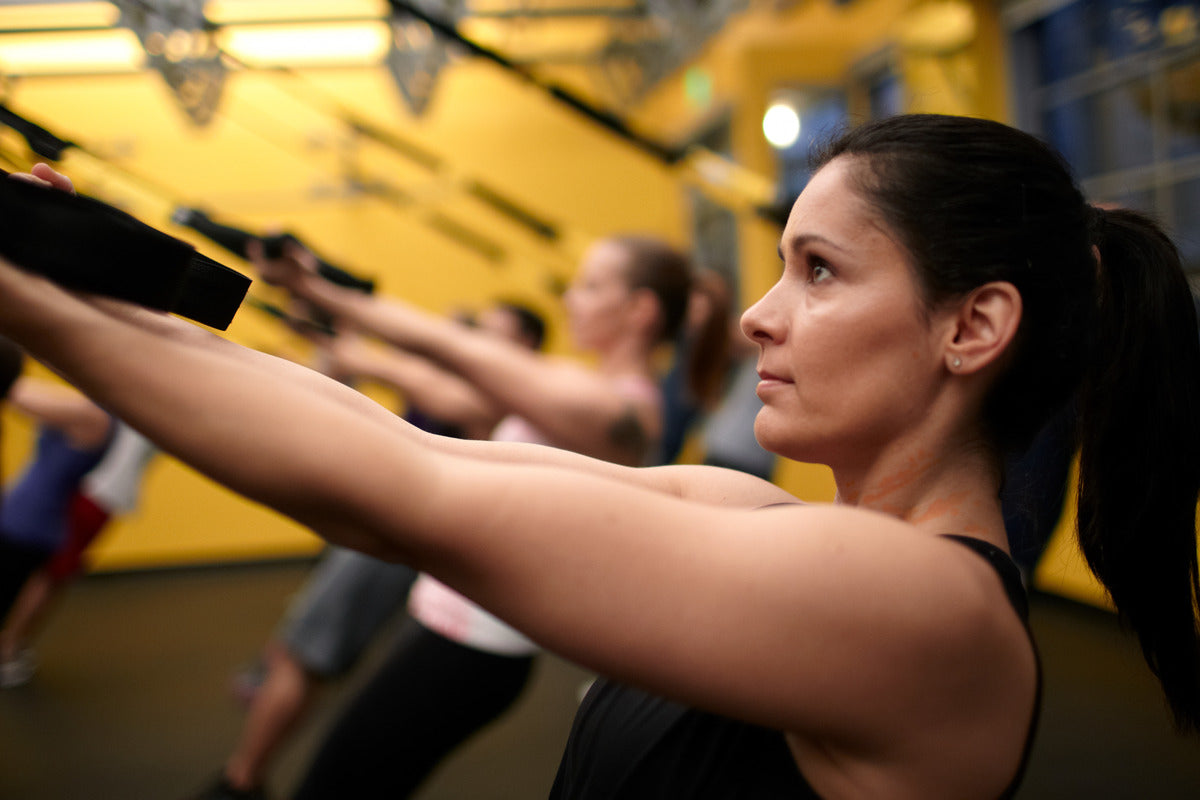When it comes to fitness and strength training, the choices are abundant, and it can be a bit overwhelming to determine which training method is best suited for your goals. In this article, we're diving into TRX Suspension Training and Resistance Band Training, two fantastic workout methods that offer flexibility and effectiveness. No need to sweat over this choice; we're here to compare TRX suspension training versus resistance band training.
What is TRX Training?
TRX training, short for Total-Body Resistance Exercise, is a dynamic and highly effective form of fitness training that's gained a lot of attention in recent years. It's all about using your body weight as resistance to build strength, improve balance, and enhance flexibility.
TRX straps, which consist of adjustable nylon straps with handles, are the core equipment used in this training method. They can be anchored to a stable structure like a door frame, tree, or specialized TRX anchor point, allowing you to perform a wide range of exercises. The beauty of TRX lies in its simplicity – you use your body weight and gravity to create resistance, making it accessible to individuals at various fitness levels.
In recent years, TRX training has gained enormous popularity in the fitness world. You'll find TRX classes offered in many gyms, countless home enthusiasts have invested in TRX straps for their workouts or directly TRX Training via the TRX TRAINING CLUB app. It's a testament to the effectiveness and versatility of this training method. So, if you're looking for a way to challenge your body and experience a new dimension of fitness, TRX training is a fantastic option to explore.

What is Resistance Band Training?
Resistance band training is a highly adaptable and efficient method of building strength and enhancing fitness through the use of resistance training equipment like bands. These bands, typically constructed from durable materials like latex, come in various shapes, sizes, and resistance levels. They are incredibly versatile, offering a range of exercises to target distinct muscle groups and deliver a comprehensive full-body workout.
As you stretch the bands during exercises, they exert opposing force on your muscles, providing a challenging workout. The resistance level increases with the thickness and tension of the band, granting the capacity to tailor your workouts to different levels of intensity.
Resistance bands have become incredibly popular in recent years due to their effectiveness and convenience. They are widely used in fitness routines, from strength training and rehabilitation to yoga and Pilates. In addition to their use in gyms and fitness centers, many people incorporate resistance bands into their home workouts, making them a cost-effective and space-efficient alternative to traditional weightlifting equipment.
Here are some resistance band workouts you can do today:
Why You Should Do TRX Training
TRX training comes with a host of benefits that make it an attractive choice for fitness enthusiasts of all levels. It not only builds muscle strength but also enhances stability, flexibility, and balance. The versatility of TRX workouts allows you to tailor your routine to meet your specific fitness goals, whether you're aiming for lean muscle growth, improved core strength, or better overall fitness.
Additionally, TRX training excels in delivering full-body workouts at home. Many exercises engage multiple muscle groups at once, simulating real-life movements. This means you're not only toning individual muscles but also enhancing the coordination between them. By training your body to work as a whole, you build a foundation for improved performance in sports and activities outside of the gym.
One of the most convincing reasons to consider TRX training is the success stories and testimonials from individuals who have experienced remarkable transformations. Many people have found their fitness goals within reach through this method. Whether it's shedding pounds, sculpting lean muscles, or overcoming physical challenges, the TRX system has proven to be a powerful ally on the journey to better health and fitness. These real-life stories are a testament to the effectiveness of TRX training and serve as inspiration for anyone looking to take their fitness to the next level. Read more about why Devi believes the TRX is more than ‘just a quick workout’ here.
Try one of our TRX products today:
Why You Should Do Resistance Band Training
Resistance band training offers a multitude of benefits that make it a compelling choice for anyone seeking an effective and adaptable fitness regimen. First and foremost, resistance band training is renowned for its versatility. These bands can be used to target various muscle groups, from your legs and arms to your back and chest. This versatility makes them suitable for a broad range of exercises, such as squats, bicep curls, and lateral leg lifts. By varying your choice of bands and exercise selection, you can personalize your workout to meet specific goals, whether it's building strength, improving flexibility, or toning your muscles.
One of the standout features of resistance band training is its precision in targeting muscle groups. Unlike some traditional weightlifting exercises that might inadvertently engage adjacent muscles, resistance bands allow you to isolate specific areas. This precision is valuable for both rehabilitating injured muscles and strengthening weaker areas, contributing to a more balanced and tailored fitness program.
Convenience and affordability are two more compelling reasons to embrace resistance band training. These portable bands take up minimal space and can be used at home, the gym, or even on the go. They eliminate the need for costly gym memberships and expensive exercise equipment, making fitness more accessible to a broader audience. Resistance bands offer an affordable alternative to free weights, yet they deliver similarly effective results in terms of muscle activation and strength development.
What are the Main Differences Between Suspension Training and Resistance Bands?
The main differences between suspension training and resistance band training are the source of resistance, anchoring, versatility, affordability, and portability. Take a look more below:
Source of Resistance
When it comes to the source of resistance, TRX training and resistance bands employ distinct mechanisms:
In TRX training, resistance is primarily generated through body weight and gravity. The adjustable straps and handles of the TRX system are anchored to a fixed point, and you use your own body as the weight that opposes your movements. For example, when you perform a TRX chest press, you lean forward, creating an angle between your body and the anchor point. This angle increases the gravitational resistance that you must overcome, challenging your muscles. The farther you move towards the anchor point, the greater the resistance.
Resistance bands, on the other hand, create resistance through their inherent elasticity. As you stretch a resistance band during an exercise, it resists the elongation, effectively challenging your muscles. The level of resistance depends on the thickness and tension of the band, with thicker bands providing greater resistance. For instance, when doing a bicep curl with a resistance band, the band offers opposition as you stretch it, thereby working your bicep muscles. The further you stretch the band, the more resistance you encounter, making the exercise more challenging.
Anchoring
The method of anchoring plays a pivotal role in the practicality and versatility of both TRX training and resistance bands:
TRX training requires a secure anchor point for the suspension straps. These anchor points can vary and may include overhead fixtures like door frames, sturdy branches, or specially designed TRX anchor points. The anchor point should be stable and capable of withstanding the force generated during your workout. You attach the TRX suspension trainer to this anchor point, allowing you to leverage your body weight for resistance. The adjustability of the straps enables you to alter the angle and position to target different muscle groups effectively.
Resistance bands, in contrast, offer greater flexibility in terms of anchoring. They can be anchored to a wide array of objects, such as a door handle, a fixed post, or your own body. For instance, for a bicep curl, you can step on the middle of the resistance band with both feet and use the handles for a secure grip. The ability to anchor resistance bands to various points makes them exceptionally versatile, adaptable to different exercises, and well-suited for home workouts or when you're on the go.
Versatility
Both TRX training and resistance bands are celebrated for their versatility, offering a wide range of exercise options and adaptability to individual fitness levels:
TRX training excels in its adaptability to various exercises. The adjustable straps and handles provide the foundation for an extensive array of movements. With TRX, you can perform exercises for virtually every muscle group in your body. From classic exercises like push-ups, squats, and rows to more advanced movements like pikes and hip presses, the versatility of TRX allows you to tailor your workout to your specific fitness goals and needs. Additionally, the Vector Resistance Principle enables you to increase or decrease the intensity of exercises simply by adjusting your body's angle to the anchor point, providing a spectrum of difficulty levels.
Resistance bands are also highly versatile. These bands can be used for a wide variety of exercises targeting different muscle groups. You can perform upper body exercises like bicep curls, tricep extensions, and lateral raises, or focus on lower body movements such as squats, lunges, and leg lifts. Resistance bands can also be employed for stretching routines to improve flexibility and range of motion. The precision in targeting muscle groups makes them effective tools for rehabilitation and strengthening specific areas. Resistance bands can easily be interchanged to adjust the resistance level, enabling you to progress steadily and customize your workout according to your fitness level and objectives.
Affordability
Affordability is a significant consideration when selecting a fitness training method. Let's examine the cost aspects of TRX equipment and resistance bands:
TRX equipment, including the suspension trainer and anchor point accessories, can be a bit pricier upfront. A high-quality TRX suspension trainer typically costs between $150 to $200 or more, depending on the specific model and any included accessories. While this initial investment might seem significant, it's important to note that TRX equipment is built to last and is durable. The quality and craftsmanship of TRX products ensure longevity, making it a wise investment for those committed to their fitness journey. What's more, TRX suspension trainers are designed with portability in mind, and various models are available, including lightweight options. This means that they're the perfect travel companion, allowing you to take your workout on the road and never miss a chance to stay active and fit.
Resistance bands, on the other hand, are notably more budget-friendly. A set of high-quality resistance bands with varying resistance levels can cost as little as $10 to $30. These bands are typically constructed from latex or other durable materials, offering excellent value for the price. Resistance bands are not only cost-effective but also similar to the TRX highly portable, allowing you to carry your entire workout routine in a small bag or even your pocket.
In the long run, resistance bands prove to be a highly cost-effective fitness solution. They require minimal ongoing investment, making them accessible to a broad range of individuals. The versatility of resistance bands ensures that they can adapt to your changing fitness needs and levels, reducing the need for purchasing additional equipment. Since they are resistant to wear and tear, quality resistance bands can last for an extended period, offering excellent value over time.
While the initial investment in TRX equipment might be higher, its durability and adaptability make it a valuable long-term investment for those dedicated to TRX training. However, for individuals on a tighter budget or looking for an affordable yet effective fitness solution, resistance bands present an attractive and cost-effective option. Ultimately, the choice between TRX and resistance bands depends on your budget and long-term fitness goals.
Portability
TRX systems can be disassembled and easily stowed in a travel bag or backpack, making them a convenient choice for those who want to take their workouts on the road or to the park. While the setup may require a bit more time and effort due to the need for a secure anchor point, it's a worthwhile investment for individuals who appreciate the unique full-body workout experience that TRX provides.
Resistance bands are also exceptionally portable. They are lightweight and can be rolled up or neatly folded into a small pouch, making them an ideal choice for travelers. Resistance bands are remarkably versatile and require minimal setup. Whether you're in a hotel room, by the beach, or in a park, you can use them without the need for anchor points. Both TRX and resistance bands are extremely portable and can be brought with you anywhere, making it a perfect one-two punch for your next on-the-go workout.
Building Core Strength
TRX training places a strong emphasis on core strength. The instability of the hanging straps means that your core muscles are continuously engaged to stabilize your body during exercises. Whether you're performing a TRX plank, bicep curl, or front squat, your core is working overtime to keep you balanced and in control. This dynamic engagement of the core muscles not only builds strength but also enhances stability and coordination. TRX training is particularly effective for developing a strong and stable core.
Resistance bands can also be used to target core muscles effectively. Some core exercises with resistance bands include:
- Banded Russian Twists: Sit on the floor with your legs bent and feet flat. Loop a resistance band around your feet and hold the ends in your hands. Lean back slightly and twist your torso to one side while extending your arms. Return to the center and repeat on the other side. This exercise engages your obliques and rectus abdominis.
- Banded Woodchoppers: Anchor the resistance band at shoulder height. Hold one end of the band with both hands and stand to the side of the anchor point. Pull the band diagonally across your body, engaging your core and obliques. This exercise simulates the motion of chopping wood and is great for core and oblique development.
- Banded Leg Raises: Anchor the band to a low point, such as a post or furniture leg. Loop the band around your ankles and lie on your back. Raise your legs while keeping them straight, engaging your lower abdominal muscles. This exercise is fantastic for lower core strength.
Both TRX and resistance bands offer effective ways to build core strength, with TRX training focusing on overall core engagement and resistance bands providing targeted exercises to work specific core muscles. The choice between the two may come down to your preference and goals, but either can be a valuable addition to your core-strengthening routine.
Building Overall Muscle
Both TRX training and resistance bands can be effective tools for building overall muscle, but they offer distinct advantages and considerations in terms of muscle growth:
The versatility of TRX allows you to perform compound movements that engage multiple muscles simultaneously, making it highly effective for muscle growth. Exercises like TRX rows, chest presses, and squats work not only the primary muscle groups but also activate supporting muscles to ensure balanced development. The Vector Resistance Principle enables you to adjust the intensity of exercises, making TRX adaptable to different fitness levels and muscle-building goals.
Resistance bands also offer significant muscle-building potential. By providing resistance throughout the entire range of motion, resistance bands create muscle tension, which is a key factor in stimulating muscle growth. Resistance bands can be used for a wide variety of exercises that target specific muscle groups, including bicep curls, tricep extensions, and leg presses. They allow for precise targeting of particular muscles, making them a valuable tool for both muscle isolation and compound exercises. The adjustability of resistance bands allows you to progressively increase the resistance level, supporting steady muscle growth over time.
Conclusion
In this journey through TRX suspension training and the world of resistance bands, we've explored two fantastic avenues to boost your strength, flexibility, and overall fitness. Both TRX training and resistance bands have their unique charms and can make your workouts not only productive but also enjoyable. But the real question is: which one is your perfect fitness match?
These aren't just tools; they're gateways to a fitter, healthier you. TRX training stands out with its ability to engage your body weight, making gravity your workout partner. It's all about building strength, enhancing stability, and enjoying full-body workouts. You've heard real-life success stories that prove TRX is more than just exercise – it's a lifestyle changer.
On the flip side, resistance bands are your nimble, adaptable companions. They flex, stretch, and target muscles like a personal trainer. These bands are the budget-savvy, travel-ready, and space-conscious solution you've been looking for. They're more than just elastic – they're a world of exercise possibilities in a pocket-sized package.
But remember, it's not about which one is "better" – it's about which one is better for you. What are your goals? What's your budget? What's your idea of a perfect workout? TRX and resistance bands can both get you there, but the right choice depends on your unique needs. So, whether you hang your TRX straps or roll out your resistance bands, remember that the journey to better health starts with your choice and your commitment.

